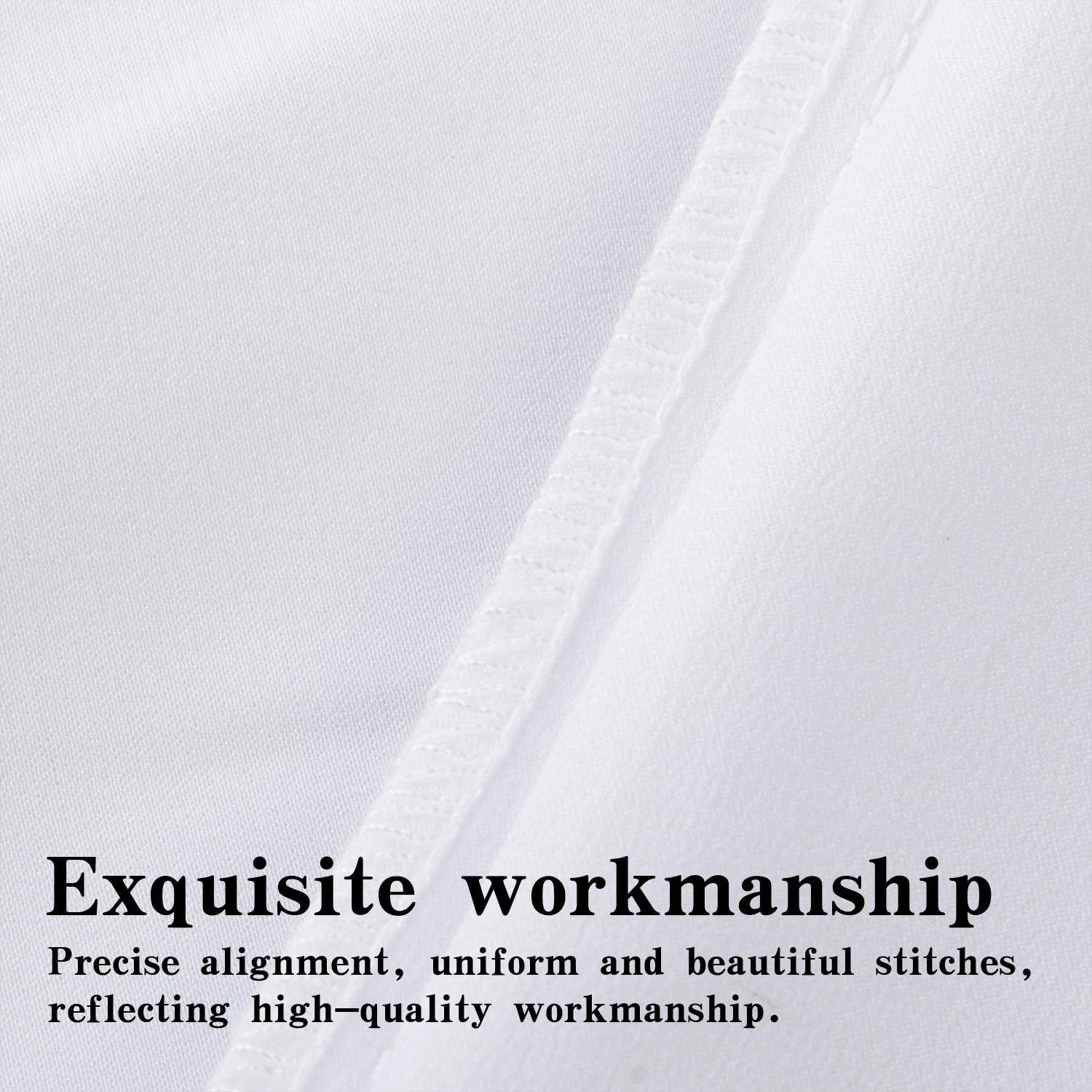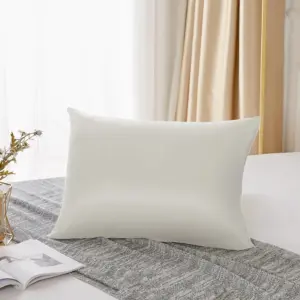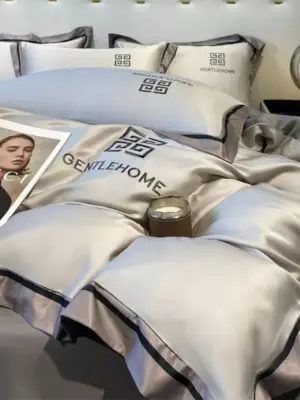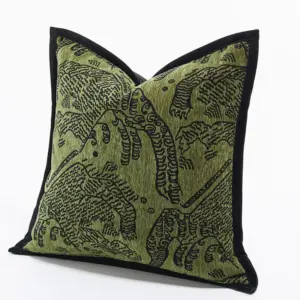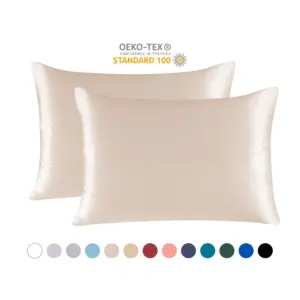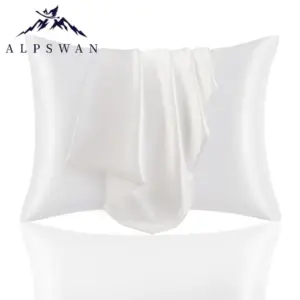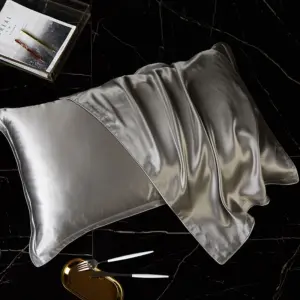Introduction: The Truth About Silk Pillowcases and Hair Health
Yes, silk pillowcases genuinely help improve hair health. The smooth surface of silk creates significantly less friction against your hair strands while you sleep, leading to reduced breakage, fewer split ends, and less morning frizz. Unlike cotton, which can rough up the hair cuticle during the night, silk allows hair to glide effortlessly across your pillow.
Many people remain skeptical about silk pillowcases, viewing them as just another beauty trend with exaggerated claims. However, the benefits of silk for hair care are rooted in its physical properties rather than marketing hype. Silk’s natural protein structure and smooth fiber composition provide measurable advantages for maintaining hair health.
While comprehensive information about silk pillowcase benefits for hair shows that results vary depending on your hair type and concerns, almost everyone experiences some improvement when switching from cotton to silk. Those with curly, fine, or damaged hair often notice the most dramatic results.
In this article, we’ll explore the science behind how silk pillowcases benefit your hair, examine expert opinions, and help you understand whether investing in silk pillowcases designed for hair protection is worthwhile for your specific needs.
How Silk Pillowcases Physically Protect Hair Structure
Silk’s ability to protect hair stems from its unique physical structure. Unlike cotton, which consists of short, rough fibers that can catch and snag hair, silk is made of long, continuous protein fibers with an incredibly smooth surface. This fundamental difference in texture creates less friction against your hair as you move during sleep.
When hair experiences friction, the protective outer layer called the cuticle can become lifted and damaged. The cuticle consists of overlapping scales that, when damaged, allow moisture to escape and leave hair vulnerable to breakage. By minimizing friction, silk helps maintain the integrity of this protective layer.
The quality of silk is measured in momme weight (similar to thread count), with optimal hair protection coming from fabrics in the 19-25 momme range. Higher momme weights indicate denser silk with better durability and smoother surfaces, providing superior hair protection.
Silk’s protein composition (sericin and fibroin) also creates a surface that’s less likely to strip natural oils from hair compared to more absorbent materials. This helps how silk pillowcases reduce hair breakage and maintain hair’s natural moisture balance, which is crucial for strength and elasticity.
Understanding the importance of choosing silk pillowcases by momme weight helps ensure you get the maximum hair protection benefits from your investment.
Reduced Breakage and Split Ends: Examining the Evidence
Hair breakage occurs primarily through mechanical damage—when hair strands are bent, stretched, or rubbed against rough surfaces. Textile engineering studies have confirmed that silk has a significantly lower friction coefficient than cotton, meaning hair strands move with much less resistance across its surface.
This reduced friction is particularly beneficial for fine or fragile hair types that break easily. When you sleep on cotton, the rougher texture creates tiny points of friction that can weaken hair over time, especially at the crown and back of the head where pressure is greatest during sleep. In contrast, high-quality mulberry silk pillowcases provide a smoother surface that minimizes this damage.
For those with damaged or chemically treated hair, this protection becomes even more important. Hair that has been colored, bleached, permed, or heat-styled already has compromised cuticles, making it especially vulnerable to the mechanical damage that occurs during sleep. By reducing this nightly friction, silk pillowcases help prevent further damage and allow your hair’s natural repair processes to work more effectively.
While silk pillowcases can’t fix already-existing split ends, they can significantly reduce the formation of new ones. Over time, this prevention leads to hair that retains length better and requires less frequent trimming—creating the impression of faster growth when it’s actually just better retention of the hair you’re already growing.
Moisture Retention: How Silk Preserves Hair Hydration
One of silk’s most significant benefits for hair health is its low absorbency compared to cotton. Cotton is highly absorbent by nature—it can draw moisture from your hair throughout the night, contributing to dryness and dehydration. Silk, on the other hand, is naturally hydrophobic (water-repelling), allowing your hair to retain its natural moisture.
This moisture-preserving quality is especially important for maintaining your hair’s natural oils. These oils serve as your scalp’s built-in conditioning system, traveling down the hair shaft to provide protection and shine. When you sleep on cotton, these oils can be absorbed into the pillowcase rather than benefiting your hair.
For those with dry, coarse, or chemically treated hair, this moisture retention becomes even more crucial. These hair types are already prone to dryness, and sleeping on materials that further strip moisture only compounds the problem. The benefits silk offers for transformative sleep include allowing these natural oils to remain in your hair, leading to improved hydration, elasticity, and overall health.
The moisture retention benefit extends beyond just preventing dryness—it also helps maintain the protein-moisture balance in your hair, which is essential for strength and resilience. When hair retains its proper moisture level, it’s less prone to brittleness and breakage, creating a virtuous cycle of improved hair health.
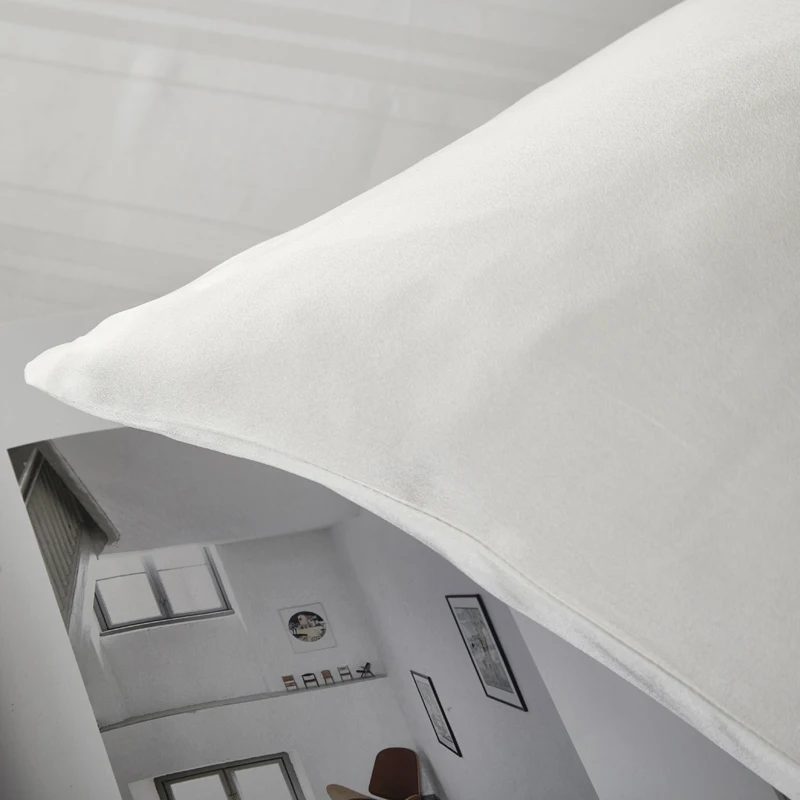
Frizz Control and Smoother Hair: The Silk Advantage
Frizz occurs when the hair cuticle is raised rather than lying flat, allowing moisture to enter and exit the hair shaft unevenly. This disruption in the hair’s moisture balance causes individual strands to swell and bend in different directions, creating the characteristic frizzy appearance.
Silk pillowcases help combat frizz in two key ways. First, the reduced friction keeps the cuticle smoother and less disrupted during sleep. Second, by helping hair maintain consistent hydration levels, silk prevents the moisture imbalance that triggers frizz in the first place.
This benefit is particularly pronounced for those with curly, wavy, or coily hair textures. These hair types are naturally more prone to frizz because their cuticle structure is more easily disrupted. Silk pillowcases benefit curly hair by preserving curl definition and reducing the “halo” of frizz that often appears after sleeping on cotton.
The smooth surface of standard size silk pillowcases also helps prevent the formation of static electricity—another common cause of flyaways and frizz. Cotton can generate static as you move during sleep, which disrupts the hair’s natural alignment and contributes to morning frizz. Silk’s natural properties resist static buildup, helping hair stay smoother.
For many people, the frizz control benefit alone justifies the switch to silk, as it can significantly reduce styling time and the need for heat tools and anti-frizz products, creating healthier hair in the long run.
Hairstyle Preservation: Extending Your Blowouts and Styles
One of the most immediately noticeable benefits of switching to silk pillowcases is how much longer your hairstyles last. When you sleep on cotton, the friction and catching action can completely dismantle a carefully crafted hairstyle overnight. Silk’s smooth surface allows hair to glide freely, preserving your style much longer.
For those who invest time and money in blowouts, straightening, or curling, this preservation can be a significant advantage. Many find their styles lasting 2-3 days longer when sleeping on silk, reducing the frequency of heat styling and the associated damage. This is especially valuable for those with thick hair that takes considerable time to style.
Curl definition also benefits tremendously from silk pillowcases. Natural curls maintain their spiral pattern better without the crushing and flattening that occurs with cotton. Those who use curl-setting methods like plopping or scrunching often find their results last significantly longer when protected by queen size silk pillowcases during sleep.
This style preservation creates a positive ripple effect for hair health. When styles last longer, you need less frequent washing, restyling, and heat application—all of which can damage hair over time. Many users find they can extend the time between washes by at least a day, allowing natural oils to better condition their hair and scalp.
Silk vs. Cotton Pillowcases: A Comprehensive Comparison
When comparing silk to cotton pillowcases for hair health, several key differences become apparent:
| Factor | Silk | Cotton |
|---|---|---|
| Surface Texture | Extremely smooth with minimal friction | Rougher texture with higher friction |
| Moisture Absorption | Low absorption, preserves hair’s moisture | Highly absorbent, draws moisture from hair |
| Impact on Hair Breakage | Minimizes breakage through reduced friction | Can cause significant breakage, especially at pressure points |
| Static Electricity | Naturally resistant to static buildup | Prone to generating static electricity |
| Temperature Regulation | Natural temperature regulation keeps cool | Can retain heat, potentially exacerbating frizz |
| Durability | Highly durable with proper care | Generally more durable but roughens with washing |
| Cost | Higher initial investment | More affordable initially but may require more frequent replacement |
The comparison between silk and cotton pillowcases for hair health shows clear advantages for silk in almost every category. While the initial cost is higher, the benefits for hair health and the extended lifespan of properly maintained silk often justify the investment.
Cotton’s rougher surface creates micro-abrasions on hair strands over time, while silk’s smooth surface allows hair to move freely. This fundamental difference affects everything from breakage rates to frizz development and style longevity.
For those concerned about both their hair and their overall sleep experience, silk and cotton pillowcase comparisons also reveal silk’s superior comfort benefits, including better temperature regulation and reduced facial creasing—advantages that complement its hair health benefits.
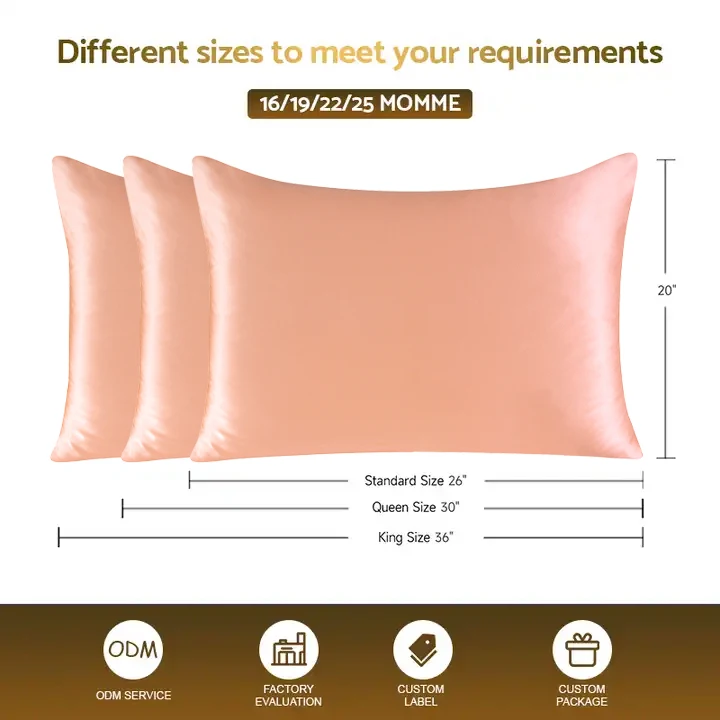
Hair Type Matters: Who Benefits Most from Silk Pillowcases?
While silk pillowcases offer advantages for all hair types, certain hair textures and conditions see more dramatic benefits:
Fine/Thin Hair:
– Significantly reduced breakage due to less friction
– Better volume retention without flattening
– Less tangling and matting overnight
– Preserved hair density through reduced fallout
Curly/Coily Hair:
– Maintained curl definition and pattern
– Dramatically reduced frizz and fuzzy halo effect
– Less disruption of curl clumping
– Reduced need for restyling and rewetting
Color-Treated Hair:
– Better color retention through reduced friction
– Preserved moisture essential for color vibrancy
– Less fading due to reduced absorption of hair products
– Extended time between color treatments
Natural/Textured Hair:
– Preserved protective styles for longer periods
– Reduced manipulation needs, minimizing breakage
– Better moisture retention essential for curl pattern
– Less shrinkage and better length retention
Damaged/Chemically Processed Hair:
– Protected weakened hair structure during vulnerable sleeping hours
– Maintained moisture in hair that’s already prone to dryness
– Reduced need for heat styling to correct sleep-induced issues
– Support for the healing process between treatments
Understanding various pillowcase materials for healthy hair helps you choose the option that best addresses your specific hair concerns and goals.
Expert Opinions: What Professionals Say About Silk for Hair
Hair care professionals widely endorse silk pillowcases as part of a comprehensive hair health routine. Dermatologists frequently recommend silk for clients with fragile hair or those experiencing increased shedding, noting that reducing friction during sleep can make a significant difference in breakage rates.
Professional hairstylists often suggest king size silk pillowcases for clients who invest in high-end color treatments or professional styling, as the extended protection helps preserve their work. Many stylists report noticeable differences in the condition of clients’ hair ends and overall manageability when they switch to silk.
Trichologists—specialists in scalp and hair health—point to silk’s friction-reducing properties as beneficial for those with hair thinning concerns. While they clarify that silk won’t prevent genetic hair loss, it can reduce the mechanical stressors that exacerbate existing thinning.
The professional consensus centers around silk’s ability to preserve hair’s natural moisture balance and protect the cuticle from mechanical damage. While experts caution against viewing silk as a miracle solution, they consistently acknowledge it as a valuable component of a hair health strategy, particularly for those with damaged, processed, or naturally dry hair types.
Common Misconceptions About Silk Pillowcases and Hair
Can silk pillowcases prevent hair loss?
Silk pillowcases can reduce breakage but cannot stop genetic or hormonal hair loss. They may minimize traction alopecia (hair loss from pulling) by reducing friction, but they’re not a treatment for pattern baldness or medical hair loss conditions.
Do silk pillowcases replace hair products?
No, silk pillowcases complement your hair care products rather than replace them. While they help preserve moisture and reduce the need for some styling products, they work best as part of a comprehensive hair care routine that includes appropriate cleansing, conditioning, and protection products.
Is satin just as good as silk for hair?
While satin pillowcases offer some friction reduction, they don’t provide the same benefits as natural silk. Satin is a weave pattern rather than a fiber type and is often made from synthetic materials that don’t offer silk’s protein structure or moisture-preserving properties. Quality silk outperforms satin for both hair and skin benefits.
Will results be immediate?
Most people notice reduced morning frizz and tangling immediately, but more substantial benefits like reduced breakage and improved moisture balance typically become apparent after several weeks of consistent use. Research into silk pillowcase effectiveness for hair health shows that patience is key for seeing the full range of benefits.
Are all silk pillowcases equally beneficial?
No, significant quality differences exist between silk pillowcases. Momme weight, silk grade, and construction quality all impact performance. Lower-quality “silk blend” products may offer minimal benefits compared to 100% mulberry silk in the optimal 19-25 momme range.
Choosing Quality Silk Pillowcases for Hair Benefits
For maximum hair benefits, selecting the right silk pillowcase is essential:
Momme Weight: Look for 19-25 momme silk. Lower weights may be too thin to provide adequate protection, while higher weights don’t offer significant additional benefits for hair.
Silk Type: 100% Mulberry silk provides the optimal combination of smoothness and durability. This highest grade of commercial silk has longer, more uniform fibers that create the smoothest possible surface for hair.
Construction Quality: Check for reinforced stitching, hidden zippers that won’t catch hair, and French seams that prevent fraying or roughness.
Certifications: Oeko-Tex Standard 100 certification ensures the silk is free from harmful substances that could potentially damage hair or trigger sensitivities.
Proper Sizing: Ensure your pillowcase is appropriately sized for your pillow to prevent slipping and bunching that could create friction points.
Higher quality silk maintains its smooth surface even after repeated washing, providing consistent hair benefits over time. While premium silk pillowcases represent a larger initial investment, their superior durability and more significant hair protection benefits typically deliver better long-term value.
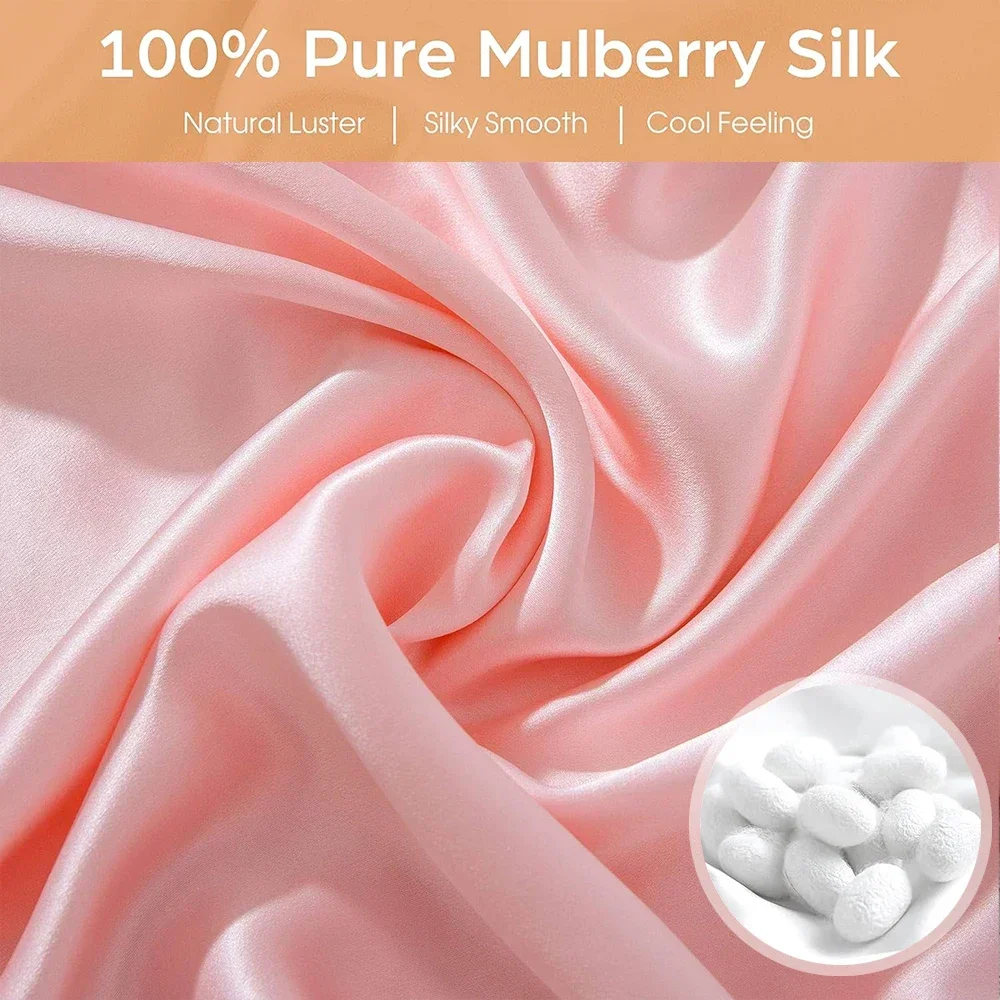
King Size Silk Pillowcases, Mulberry Silk Pillowcases, Queen Size Silk Pillowcases
Price range: $94.96 through $121.56 Select options This product has multiple variants. The options may be chosen on the product page100% Silk Sheets, Queen Size Silk Fitted Sheet, Queen Size Silk Pillowcases, Queen Size Silk Sheets
Price range: $259.05 through $284.13 Select options This product has multiple variants. The options may be chosen on the product pageQueen Size Silk Pillowcases, Standard Size Silk Pillowcases
Price range: $121.49 through $127.57 Select options This product has multiple variants. The options may be chosen on the product page100% Silk Sheets, Mulberry Silk Pillowcases, Mulberry Silk Sheets
Price range: $105.03 through $121.45 Select options This product has multiple variants. The options may be chosen on the product pageStandard Size Silk Pillowcases
$76.72 Select options This product has multiple variants. The options may be chosen on the product pageMulberry Silk Pillowcases, Standard Size Silk Pillowcases
Price range: $64.60 through $181.26 Select options This product has multiple variants. The options may be chosen on the product page
Beyond Pillowcases: Complementary Silk Products for Hair Care
Expanding your silk hair care collection can provide comprehensive protection throughout the day and night:
Silk scrunchies and hair ties offer the same friction-reducing benefits as pillowcases but for daytime wear. They help prevent the breakage and creasing often caused by elastic hair bands, making them ideal for workout hairstyles or everyday ponytails.
Silk sleep bonnets and caps provide complete hair enclosure, which is particularly beneficial for very curly or coily hair types. They help maintain protective hairstyles and keep moisturizing products on your hair rather than on your pillowcase.
Travel-sized silk pillowcases ensure you don’t lose your hair protection benefits while away from home. Many come with travel pouches that keep the silk clean and protected in your luggage.
By incorporating these complementary items into your routine, you create a consistent environment of reduced friction for your hair. The comprehensive protection silk products provide for healthier hair works synergistically—each item addresses different aspects of mechanical damage that can occur throughout your day and night.
Conclusion: The Verdict on Silk Pillowcases for Hair Health
The evidence clearly supports that silk pillowcases provide real, tangible benefits for hair health. Through reduced friction, preserved moisture, and protected hair cuticles, silk creates an optimal sleep environment that minimizes damage and helps maintain your hair’s natural beauty.
The most significant advantages come from silk’s smooth surface structure and low absorbency, which work together to prevent the common forms of mechanical damage that occur during sleep. While silk pillowcases work best as part of a comprehensive hair care approach rather than a standalone solution, they address fundamental causes of hair damage that many other products can only treat symptomatically.
Those with fine, curly, damaged, or treated hair will likely see the most dramatic improvements, but virtually everyone can benefit from the reduced friction and improved moisture retention that silk provides. The investment in quality silk typically pays dividends in reduced breakage, longer-lasting styles, and decreased need for reparative hair treatments over time.
By understanding the science behind silk’s benefits rather than viewing it as simply a luxury item, you can make an informed decision about whether silk pillowcases are worth incorporating into your hair care routine. For many, the improved hair health and reduced styling time make silk pillowcases from Sanctuary Soft a worthwhile investment in both their hair’s appearance and its long-term condition.

